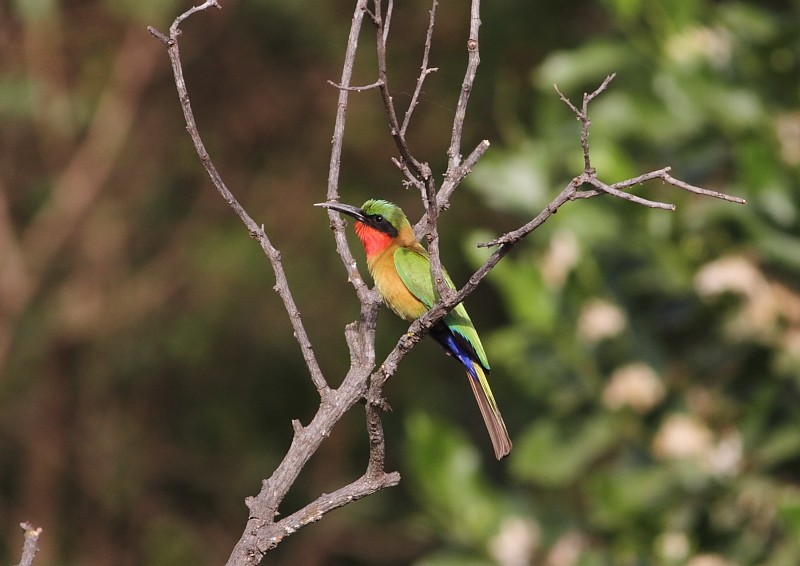Red-throated Bee-eater
A species of Typical Bee-eaters Scientific name : Merops bulocki Genus : Typical Bee-eaters
Red-throated Bee-eater, A species of Typical Bee-eaters
Botanical name: Merops bulocki
Genus: Typical Bee-eaters
Content
Description General Info
 , used under CC-BY-3.0 /Cropped and compressed from original
, used under CC-BY-3.0 /Cropped and compressed from original Description
The adult red-throated bee eater grows to about 20 to 22 cm (8 to 9 in) in length with a moderately long tail but no streamers. The upper parts are green and the red chin and throat are distinctive, though about 1% of individuals have a yellow throat. The hind neck, breast and underparts are buff, and the under-tail coverts and thighs are bright blue. To the east of the Central African Republic, the birds have blue facial features while to the west these features are green. 
Size
22 cm
Nest Placement
Burrow
Feeding Habits
Red-throated Bee-eater's diet primarily includes bees, especially honeybees, with consumption peaking in Mar-Jun. It also preys on various insects such as ants, beetles, and dragonflies. Red-throated Bee-eater hunts from perches, catching insects mid-air, then returns to the perch for devenomizing the prey. Some may kleptoparasitize food from others at the colony.
Habitat
Red-throated Bee-eater primarily inhabits bushy savannas interlaced with small, wooded rivers and seasonal streams. These birds are also found in agricultural landscapes with trees, woodland fringes near fields and marshes, as well as in parklands and overgrazed pastures prone to erosion. The presence of lateritic or hard-sand cliffs ranging from 2 to 5 meters in height is essential for their nesting, roosting, and social activities, often favoring dry watercourses with significant gulley erosion within these habitats.
Dite type
Insectivorous
General Info
Feeding Habits
Bird food type
Distribution Area
The red-throated bee-eater has a wide distribution across tropical Africa, its range extending from Senegal and Gambia in the west to Uganda, southern Sudan, and Ethiopia in the east. Its typical habitat is savannah with scattered trees, farmland with trees, the edges of marshes, bushy pastures and gardens, but the birds are seldom to be found far from the erosion gullies, streams and small rivers, in the banks of which they nest. 
Species Status
Not globally threatened.
Scientific Classification
Phylum
Chordates Class
Birds Family
Bee-eaters Genus
Typical Bee-eaters Species
Red-throated Bee-eater